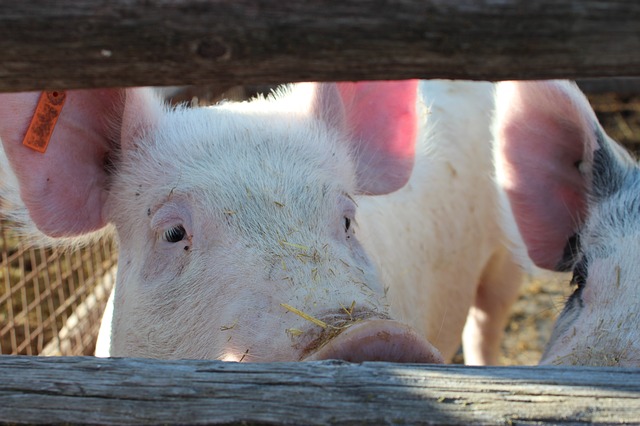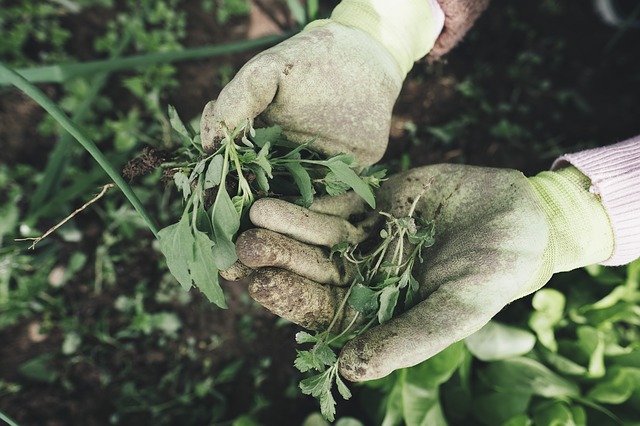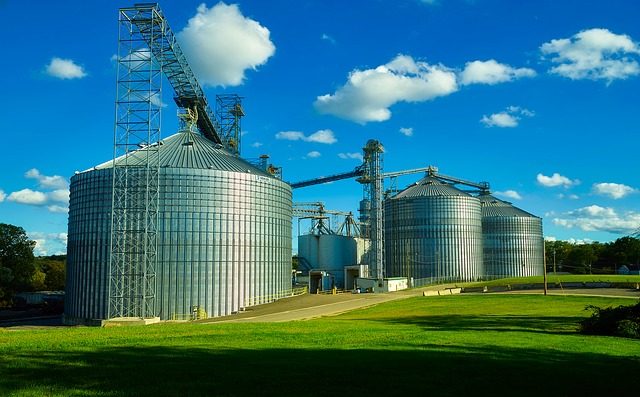
Agricultural workers are at a serious risk of injury or death when installing, climbing into, fumigating, entering, filling or emptying a silo. Because of the nature of the conditions present, workers may be exposed to hazards such as a lack of oxygen, toxic gases and grain entrapment.
To reduce worker risk of injury, properly train workers and remind them frequently of the following safety recommendations:
- Avoid entering a silo unless it is absolutely necessary.
- Complete tasks outside of the silo whenever possible.
- Have a coworker close by in case of an emergency.
- Never smoke or cause sparks near a silo, especially if the air humidity is low.
- Wear respiratory protection when appropriate.
- Stand at a safe distance when filling or emptying a silo.
- Use an approved fall restraint system and harness when climbing a silo.
- Ventilate a fumigating silo before entering.
- Conduct regular safety inspections of silos.
For more farm and ranch safety tips, contact Scurich Insurance today.
Read more

With some farmers struggling to find reliable farm labor, it is important to invest some thought in the hiring process. Here are some tips for finding the right help:
Examine your needs. You might have a general idea in your head of what work needs to be done, but it’s best to be specific. Narrow down broad processes into specific jobs so you can determine how much help you truly need.
Think about desired traits. Do you need someone to fill a temporary need, or are you hoping that person can go on to fill a managerial role? You’ll have to determine whether people skills are more important than manual labor or machinery skills, and list those traits in your job description.
Consider hiring for a trial period. If you’re hesitant about a candidate but need immediate help, consider hiring them for a short-term trial period. This saves you from high employee turnover while buying you time to recognize your needs. It allows both you and the worker to communicate any frustrations and expectations after the trial period before considering whether the working relationship is worth investing in long term.
Read more

Two new web tools created by the Noble Research Institute will allow cattle producers to easily access Oklahoma cattle auction data. The tools include a price slide table and market charts.
PRICE SLIDE TABL
The first web tool is a breakdown of the price slide (PS) and value of gain (VOG) for the reported markets. The PS and VOG tool looks at the sales receipts for the selected market, as well as frame size, gender, yield grade and the sale date to give producers a glimpse at the type of cattle buyers are looking for.
Cattle with notes about their features aren’t included in the table in order to prevent the PS and VOG from being affected. However, a link to the original USDA-AMS report is provided near the top of the page for producers who want more details and to see where the original data was taken from.
MARKET CHARTS
The second web tool is a set of charts for slaughter, feeder and replacement cattle. The tool offers an option to compare each group across whichever markets the user selects, either during a specific year or across years.
The auction comparison tool was designed to provide producers with information to help them in their marketing and purchasing options. By comparing years, producers can better evaluate how the current year is stacking up against previous years for a particular market.
Read more

It is obvious that farming can be a dangerous profession, but those working in the commercial hog farming business are exposed to particularly hazardous situations on a daily basis. As a hog farm employer, you need to continually analyze your risks to keep your business afloat. These risks not only include the health and safety of your employees, but also the physical condition of your product, which is crucial to maximizing your profits.
Keep Your Hogs Healthy and Profitable
One of the biggest risks when farming any type of animal commercially is ensuring they stay healthy so you can stay in business. Efficient operations increase profitability by reducing the spread of disease and integrating operations; however, small operations can also turn a profit by specializing in a single stage, keeping hogs healthy and raising them humanely.
As an employer, you must understand the nature of your exposures and exactly how they happen in order to prevent them from occurring at your facility.
Depending on what kind of business you run—whether it is farrow-to-finish, growing, wean-to-finish, breeding, large or family-run—your risks will change. Most of these hazards you are already aware of and take protective measures to prevent, but there are a few common sources of loss that may be overlooked.
Minimize transport loss. A recent Iowa State University study looked at more than 2 million hogs and found that more than 17,000 of them had the potential for reduced value at the processing plant because of carelessness during the transporting process. The National Hog Farmer reports loss averages as high as 2.4 percent per trailer load transported to slaughter plants in the United States over the past seven years.
While this loss might seem negligible, it could accumulate into thousands of dollars in lost business and make a huge difference in a tough market. Consider training your truck drivers and loading crews more thoroughly to emphasize gentleness of starts and stops and proper handling in the sorting, moving and loading process. Also, ensure that your trailers maintain an acceptable temperature and have suitable ventilation even when the vehicle is stopped.
Emphasize disease control. Improperly managed manure removal systems could cost you money in the form of dwindling health of your hogs. Manure buildup in barns holds the possibility for disease, especially Escherichia coli (E. coli), which is particularly fatal in piglets.
Maintain good hygiene and proper temperature control in farrowing crates to lower your mortality rate and increase productivity and profit. In addition, better hygiene leads to healthier hogs, and healthier hogs gain weight more quickly and easily than those exposed to manure buildup and noxious odor. You might consider looking into technological innovations in hog waste and lagoon management systems to help. Between 5 and 10 percent of U.S. hogs are removed from the industry every year because of death and disease, so it is important to stay ahead of your competition by implementing good, healthy practices.
Avoid unsound contracts. Farming is a dangerous occupation, and it is also an unpredictable one. If you depend on outside resources for corn, soybeans, water and medications, make sure these inputs will always be available. Feed inputs can suddenly be in short supply because of bad weather or because of competition from other non-feed harvests. Enter into solid business contracts with these providers to guarantee plenty of supplies for your anticipated number of pigs and hogs.
Keep Your Employees Healthy and Productive
Just as keeping your hogs and pigs healthy is crucial to your business, ensuring your employees are able to work and that they are in a good environment will also help you stay in business and turn a better profit. There are three major employee health concerns specific to the hog farming industry that you should work to avoid or minimize:
Respiratory problems.
According to the University of Iowa’s College of Public Health, one quarter of those working at hog farms have one or more documented respiratory problems. The most common are chronic bronchitis and asthma-like wheezing, which could both be caused by dust, endotoxin and/or ammonia exposure.
Professors at Iowa’s College of Public Health suggest using an extra one percent of oil or fat in the hogs’ diet and reducing the distance between feed drops and feeders to reduce the amount of dust in the air from feed, microbes, dried manure and pig skin cells. Require your employees to use the proper respirators if they will be working more than two hours per day in the barn.
Manure gas exposure.
Manure pits more than three feet deep that are agitated after a long period at rest release hydrogen sulfide gas, which is extremely dangerous. Consider enacting a policy that requires employees to exit the building during agitation and for the 30 minutes following in addition to requiring the appropriate personal protective equipment (PPE).
Also, it is important to empty the pit three or four times per year to reduce the amount of gas buildup. Another option is to raise the pH of the manure to keep gas from escaping the pit and potentially harming employees.
Accidental needlesticks.
ese types of incidents are far more common than expected, and the injection of chemicals meant for animals can be exceptionally dangerous to humans. Accidental needlesticks can result in several types of injuries, including inflammation, infection and hyperimmune responses. Needlesticks involving reproductive hormones can be even more hazardous for female employees, causing hormone imbalance and even miscarriages.
Instruct employees to practice caution when removing needle caps and disposing needles. Keep the proper material data safety sheets (MSDS) on file in case of a needlestick, and do not force female workers to work with hog reproductive hormones if they feel uncomfortable.
Remember that in addition to these hazards, general farming industry dangers also are present. Examples of farming risks you should bring up with employees are proper animal handling, hearing protection, proper machinery and equipment use, repetitive motion hazards, safe lifting techniques and protection against slips, trips and falls.
Be Kind to Your Neighbors
Hog farms garner lots of media attention, especially in Iowa and North Carolina, where the industry is largest. However, not all of the publicity is positive. There is growing concern among scientists that hog farm odor and byproducts could be hazardous to the environment and to people living near large operations. There have been several lawsuits recently involving neighbors of large hog farms who claim the byproducts are negatively affecting their health. Legal issues can be financially draining and negatively affect your business both at a profit level and in terms of reputation.
While there is limited evidence supporting residents’ claims that hydrogen sulfide gas omitted by large hog farms leads to serious neurological damage of people living nearby, it does not hurt to be cautious. Avoid the increasingly more common practice of spraying liquid manure into the air when the chemical levels in collection pools get too high. Regularly test the air in and around your facility for hydrogen sulfide and ammonia concentrations—the recommended standards vary by state, but they are generally around 15 parts per billion and 150 parts per billion, respectively.
In general, comply with the Occupational Health and Safety Administration’s (OSHA) standards of hazard control. Also, take additional care when disposing of chemicals and waste, and always keep the risk of litigation top-of-mind.
If you have additional questions about your exposures as a hog farm employer, contact Scurich Insurance at 831-661-5697.
Read more

As a farmer or rancher, you may produce a variety of products. Maybe you grow grain, flowers or fruit, raise cattle, horses or alpacas, or manage fish ponds, chicken barns or a custom farming fleet. A farms/ranches business owners policy is essential for protecting your livelihood.
What is a Farms/Ranches Business Owners Policy?
A regular homeowners’ policy covers your home if it’s damaged, and it may give you some liability coverage. This policy won’t give you the protection you need for your farm or ranch business, outbuildings or livestock, though. You need a specialized farms/ranches business owners policy with several layers of protection.
What Does a Farms/Ranches Business Owners Policy Cover?
Farm and ranch owners may customize their business owners insurance policy. In general, your farms/ranches business owners policy covers:
House – Repair or replace your farm or ranch house and any possessions
Liability – Cover medical and legal expenses you may incur if someone is injured while visiting your farm or ranch.
Livestock – Receive financial reimbursement if your livestock are stolen, attacked by dogs or wild animals, accidentally drown or are shot, suffer electrocution or die during a natural disaster or collision.
Machinery and equipment – Replace damaged, lost or stolen tractors, wagons and other machinery and equipment you own, borrow, rent or lease for farm or ranching activities.
Structures – Cover farm/ranch structures, including barns, pens, fences, silos, machine sheds and other buildings, that may be damaged, stolen or vandalized during a weather incident or other incident.
Additionally, you may customize your farms/ranches business owners policy with a schedule that’s based on your specific farm or ranch operation. If something on your farm or ranch is not listed on the schedule, it may not be covered if it’s damaged, lost, stolen or vandalized.
Ask your insurance agent about these optional coverages, too.
- Accidental Direct Physical Loss
- Amendatory Deductible on Cab Glass
- Chemical Drift
- Custom Farming
- Crop Dusting
- Equipment Breakdown
- Extra Expense
- Fire on Growing Grain
- Hired Auto
- Incidental Business
- Limited Pollution Liability
- Loss of Earnings
- Seasonal Coverage
Where do you Buy a Farms/Ranches Business Owners Policy?
A farms/ranches business owners policy is a valuable investment. To purchase a policy, talk to your insurance agent. Discuss your unique needs, business and budget and create a policy that’s right for you. For example, you may choose a policy with high liability limits if you conduct school tours on your farm or ranch, and the size of your farm or ranch affects the amount of coverage you will buy.
A farms/ranches business owners policy gives you peace of mind and valuable protection for your home and your business. Understand what it is as you operate your farm or ranch.
Read more

Summer Weather Safety Tips
Severe weather causes thousands of injuries and hundreds of deaths each year in the United States. Stay safe this summer by taking the following precautions:
- Create a disaster plan and a disaster supplies kit. Check the American Red Cross website for guidance.
- Identify a safe place to take shelter.
- Check the weather forecast before working outdoors.
- Set up severe weather alerts on your cellphone.
- Purchase a National Oceanic and Atmospheric Administration (NOAA)
“Weather Radio All Hazards” receiver unit with a warning alarm tone and battery.
Many Farmers Upset Over Cuba Policy
On June 16, 2017, President Donald Trump signed a presidential directive rolling back parts of former President Barack Obama’s efforts to improve the United States’ trade relationship with Cuba. Farmers saw the directive as a step backward, as it is expected to tighten restrictions on exports and complicate agricultural trade.
Shipments of U.S. grain and soy to Cuba have soared between 2016 and 2017, thanks to Obama’s 2014 diplomatic breakthrough. Within the first four months of 2017, the United States shipped 142,860 tons of grain and soy to Cuba, up from 49,090 tons during the same period of 2016. Although U.S. farmers have just gotten a taste of the profitability from exporting to Cuba, Trump’s move breakthrough is expected to cost U.S. farmers $125 million per year.
President of the U.S. Grains Council Tom Sleight said in a recent statement that, “Trump’s move could cut off near-term sales and stymie economic development that would drive longer-term demand growth.” Although the amount of exports to Cuba are small in comparison to total U.S. exports—corn exports were close to 56 million tons last year—every bit helps as farmers face a decline in farm income for the fourth consecutive year.
$20 Million Raised for Vertical Farms
Indoor agricultural startup Bowery has raised $20 million in Series A funding to build more farms, plant more crops and hire more people. The urban farming startup is one of many that intend to reimagine farming by growing produce vertically in warehouses across the country, as opposed to planting crops in sprawling fields that are reliant upon good weather.
Co-founder Irving Fain stated that since vertical farms can be built in any city, produce would be more accessible to customers and reach them more quickly.
According to Research and Markets, the vertical farm market is expected to grow to $5.8 billion by 2022.
Read more






